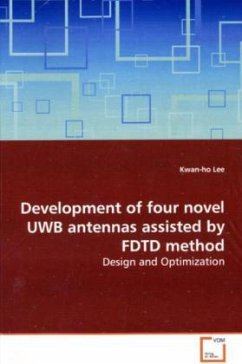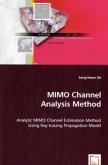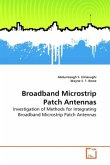In this work, the finite different time domain (FDTD)
method was selected for the design and optimization
of UWB antennas in many different application areas.
They include ground penetrating radar (GPR), anechoic
chamber feed antenna, near field probe antenna and
tapered chamber feed.
All these antennas require UWB operation, dual linear
polarization, and broad beamwidth. For each
application area, they have their own detail
operation requirements. With the help of the FDTD
code and through understanding, the antennas are
deeply studied and analyzed for the final design.
This process saves time and cost compared to the
repeated prototyping. For the verification of the
numerical result, prototype antennas are built,
measured and compared to its numerical model result.
The measurement and the simulations agree due to the
realistic modeling of the geometry.
method was selected for the design and optimization
of UWB antennas in many different application areas.
They include ground penetrating radar (GPR), anechoic
chamber feed antenna, near field probe antenna and
tapered chamber feed.
All these antennas require UWB operation, dual linear
polarization, and broad beamwidth. For each
application area, they have their own detail
operation requirements. With the help of the FDTD
code and through understanding, the antennas are
deeply studied and analyzed for the final design.
This process saves time and cost compared to the
repeated prototyping. For the verification of the
numerical result, prototype antennas are built,
measured and compared to its numerical model result.
The measurement and the simulations agree due to the
realistic modeling of the geometry.








